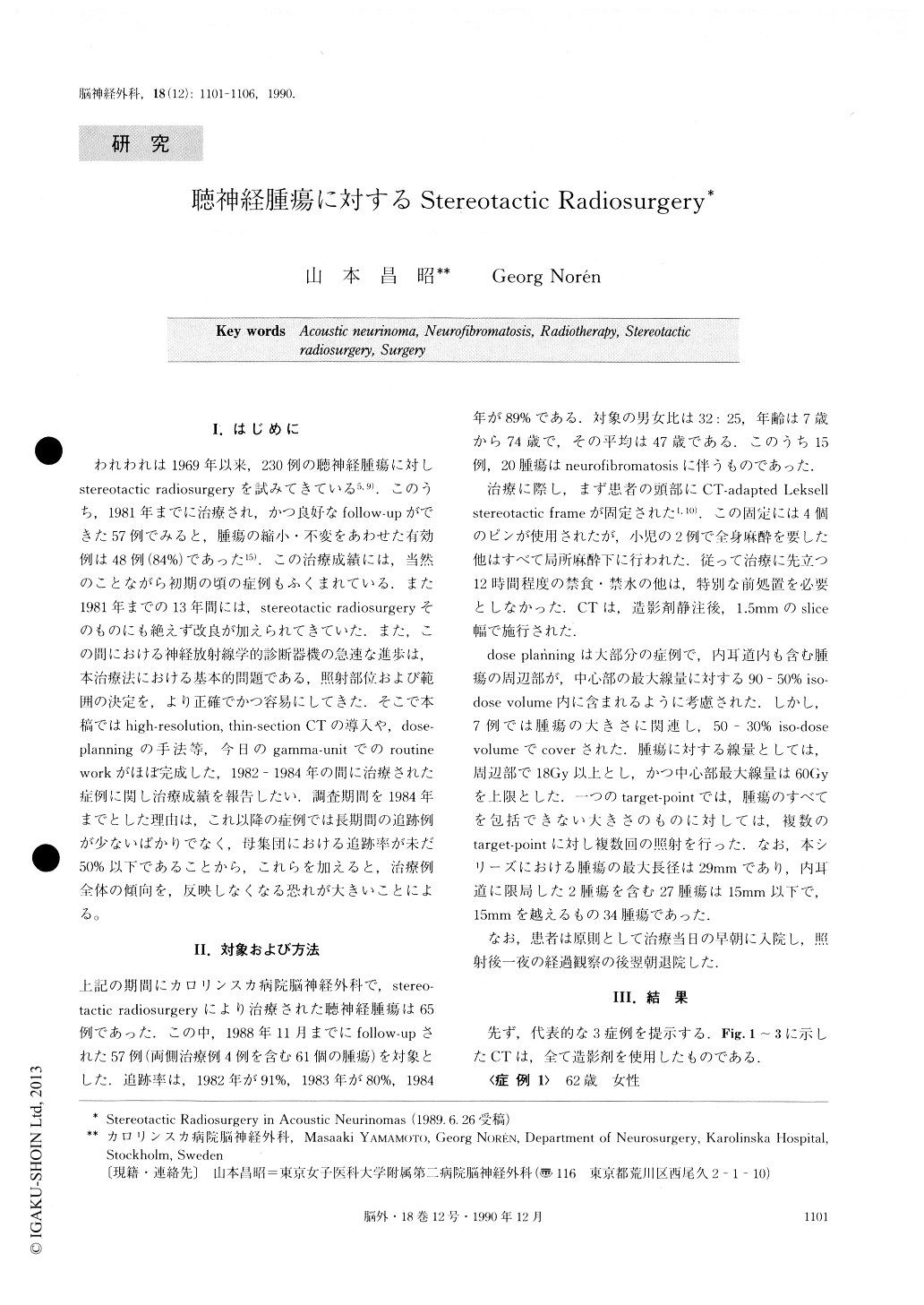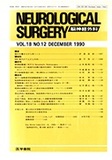Japanese
English
- 有料閲覧
- Abstract 文献概要
- 1ページ目 Look Inside
I.はじめに
われわれは1969年以来,230例の聴神経腫瘍に対しstereotactic radiosurgeryを試みてきている5,9).このうち,1981年までに治療され,かつ良好なfollow-upができた57例でみると,腫瘍の縮小・不変をあわせた有効例は48例(84%)であった15).この治療成績には,当然のことながら初期の頃の症例もふくまれている.また1981年までの13年間には,stereotactic radiosurgeryそのものにも絶えず改良が加えられてきていた.また,この間における神経放射線学的診断器機の急速な進歩は,本治療法における基本的問題である,照射部位および範囲の決定を,より正確でかつ容易にしてきた.そこで本稿ではhigh-resolution, thin-section CTの導入や,dose—planningの手法等,今日のgamma-unitでのroutine workがほぼ完成した,1982-1984年の間に治療された症例に関し治療成績を報告したい.調査期間を1984年までとした理由は,これ以降の症例では長期間の追跡例が少ないばかりでなく,母集団における追跡率が未だ50%以下であることから,これらを加えると,治療例全体の傾向を,反映しなくなる恐れが大きいことによる。
The records of 57 patients with 61 acoustic neurino-mas treated with stereotatic rediosurgery at the Karo-linska Hospital, Stockholm, from 1982 through 1984, were reviewed. Adequate radiological and clinical fol-low-up evaluations were available in these cases. Anadditional 8 patients were treated during this same period but were not included because of insufficient data.
The tumors were evaluated with CT or MEI. Their post-operative follow-up period was 6-66 months (mean 28 months). Decrease of tumor size or no change was considered as a response to radiosurgery. This was found in 54 (88%) of the tumors. Small tumors with a diameter of less than 15mm responded better (93%) than large ones (85%). Ninety-five percent of unilateral tumors and 74% of tumors associated with neurofibro-matosis responded well. Seven tumors had definite radiographic signs of subsequent growth. Four were re-moved using standard microsurgical techniques and three have so far not required further treatment.
Facial and trigeminal nerve function was evaluated in 58 facial surfaces where tumors had been irradiated. Transient facial weakness developed in 9% and facial hypesthesia in 9% of the irradiated cases. The onset of these nerve dysfunctions appeared with a latency period of 4 to 15 months after radiosurgery.
Excluding the ears which had been totally deaf be-fore the treatment, forty-one ears were evaluated fully by audiometry prior to and one year after irradiation. 30% of them had no change in hearing, 68% had a more or less pronounced deterioration and 2% had improve-ment.
We regard efficiency in arresting tumor growth with-out endangering life, preservation of facial nerve func-tion, and only a day of hospitalization as major benefits of radiosurgery.

Copyright © 1990, Igaku-Shoin Ltd. All rights reserved.


